The Trickle or the Fire Hose
A story caught my eye in my local paper not long ago: the developer of a high-end condo project was relocating three little 19th-century cottages from his building site to another neighborhood and rehabbing them so that they would not be demolished.
Photo via Risdon Group
I'd seen these cottages dozens of times on walks. They weren't a preserved-under-glass historic site; they were actively inhabited, and totally unassuming. Their residents, mostly older African-American men, were often chatting on their front porches and would wave hello. The whole scene always felt a little bit out of time—like the houses and their inhabitants alike might be apparitions from the 1920s, when the area was the bustling heart of my city's original black community, before it was redlined and Urban-Renewaled into oblivion and the locus of the black population shifted a couple miles to the north. But never were these cottages so out of context as now, with their tenants gone and a five-story concrete edifice looming behind them.
Photo via Mandeville Beer Garden
The neighborhood in question has garnered not just local but national attention of late as a remarkable redevelopment success story. When I first became acquainted with it in 2011, it had more vacant lots than buildings. In the meteoric rebound from the Great Recession, and buoyed by a city zoning change which granted developers a lot more density and flexibility, this 1/4 of a square mile has seen over 1,000 new homes, apartments and condos, and many thriving new businesses, in less than a decade. It's the ongoing target of a fire hose of development capital, and it's producing the sort of Millennial urbanist paradise you might expect circa-2005 Richard Florida to write about.
The author’s occasional office of choice: a new café in this neighborhood.
There hasn't been a ton of pushback—most people here embrace the narrative of a stunning success story, including me. I like the new version of the neighborhood a lot more than the old one, which was pretty desolate. It hasn’t been viewed as a displacement or gentrification story, because by the time the boom began, there weren’t very many people left to displace—those old men in their three cottages notwithstanding. Almost all of the new development has occurred on what had been vacant land for years if not decades.
What is worth examining is why the neighborhood had fallen so far in the first place. Only a few short blocks from the waterfront and a thriving downtown main street, why was it pockmarked with vacant lots and abandoned homes? Why had it become a place where you can look at a dilapidated shack against the backdrop of a gleaming high-rise?
And why are there a thousand blighted neighborhoods just like it all over North America, many of which aren't seeing the upside of a redevelopment boom—just a long, relentless decline and hollowing out?
This fact is an indictment of an approach to planning and investment that often leaves neighborhoods only two fates: the trickle or the fire hose. You can have virtually no reinvestment and redevelopment, or you can undergo a transformation that leaves the place unrecognizable in the span of a few years. Which do you want?
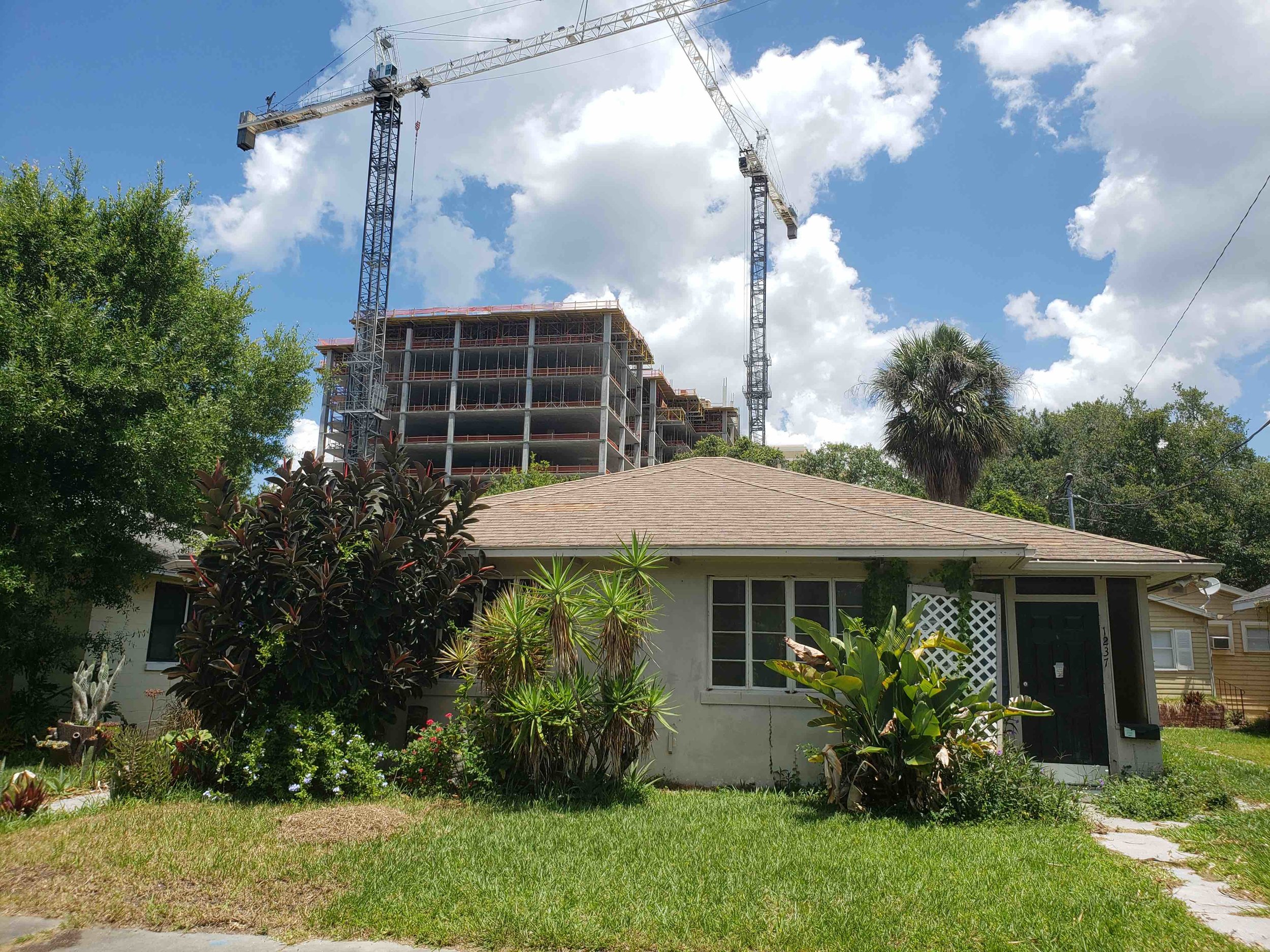
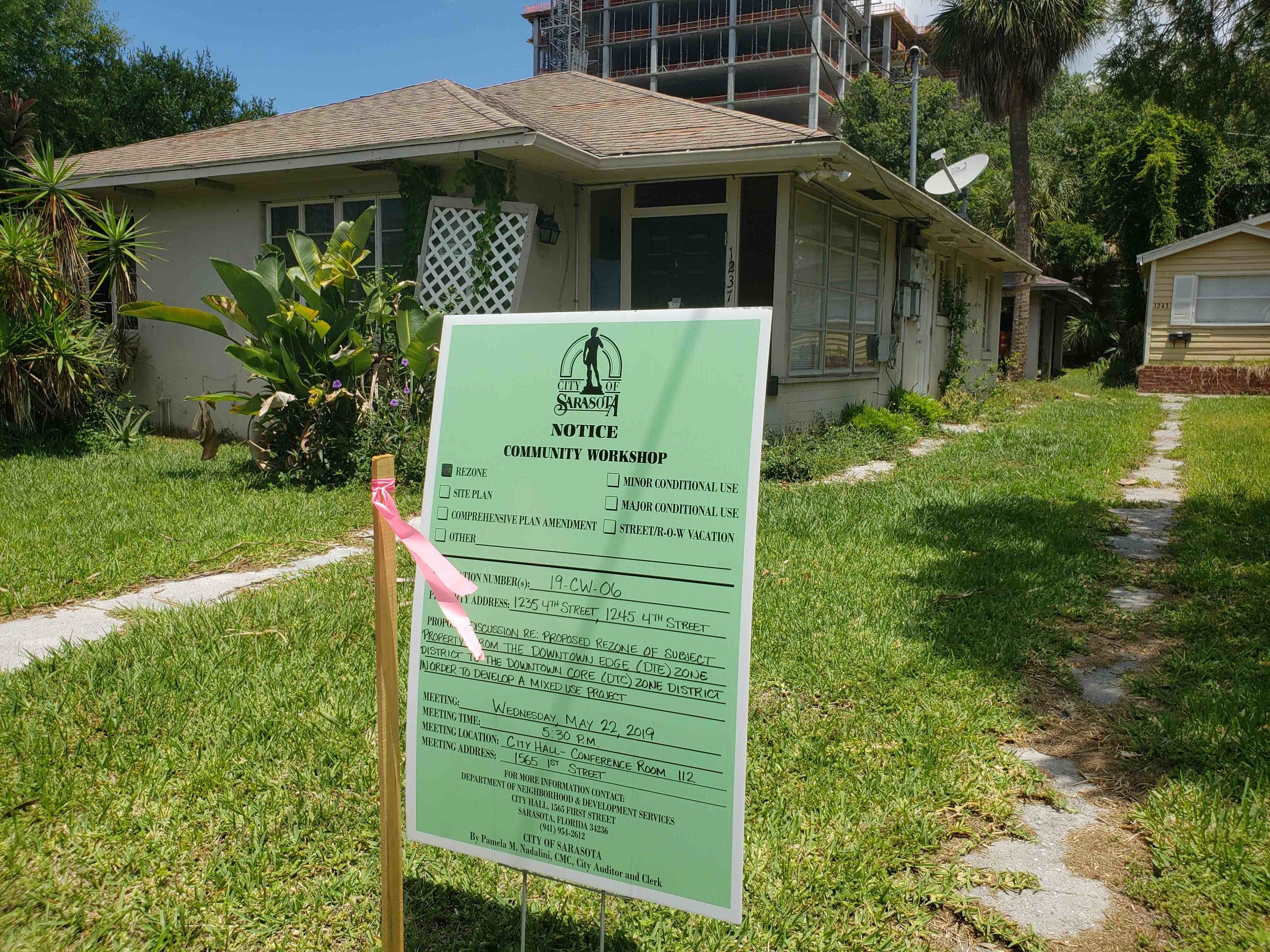
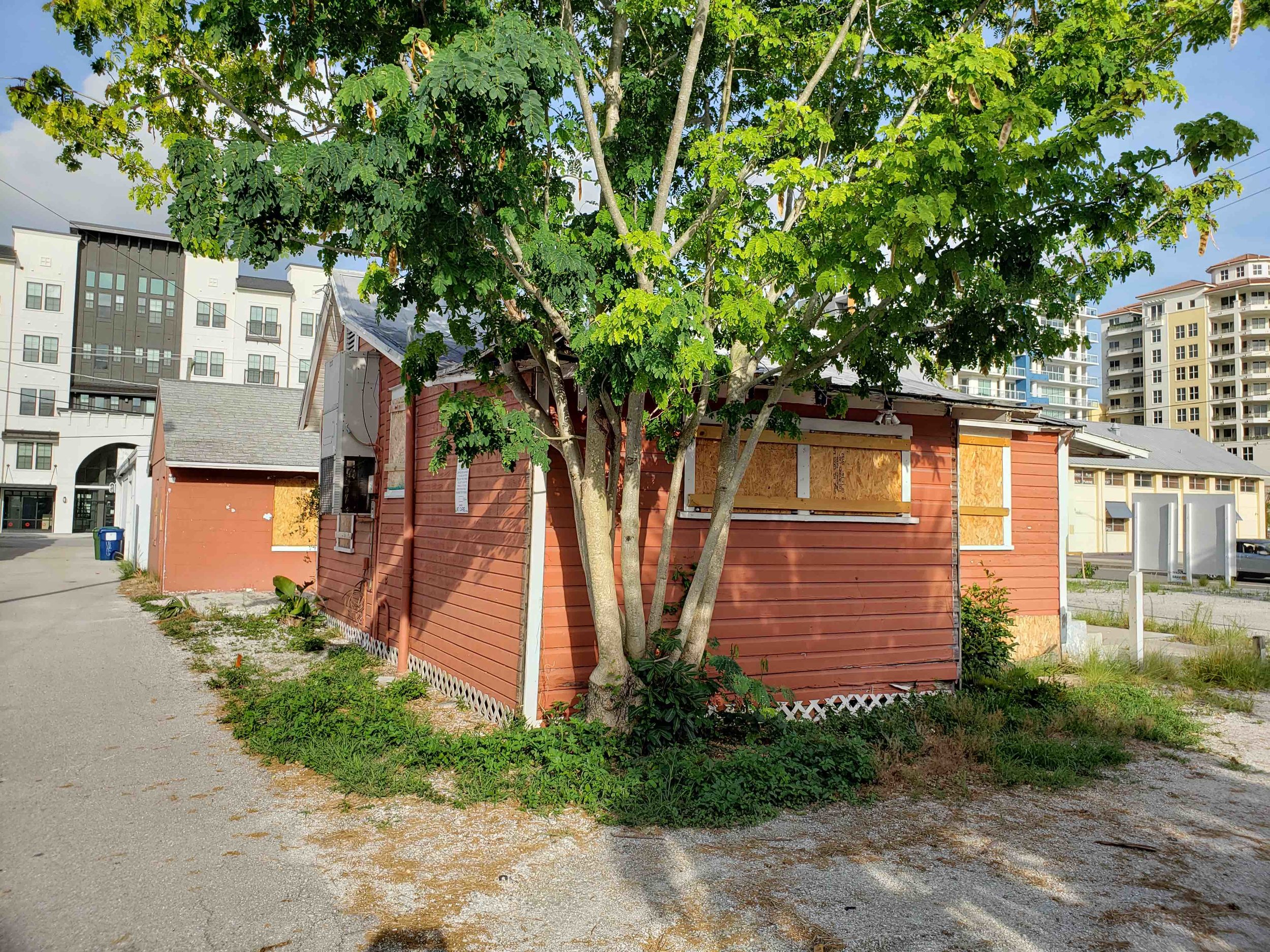
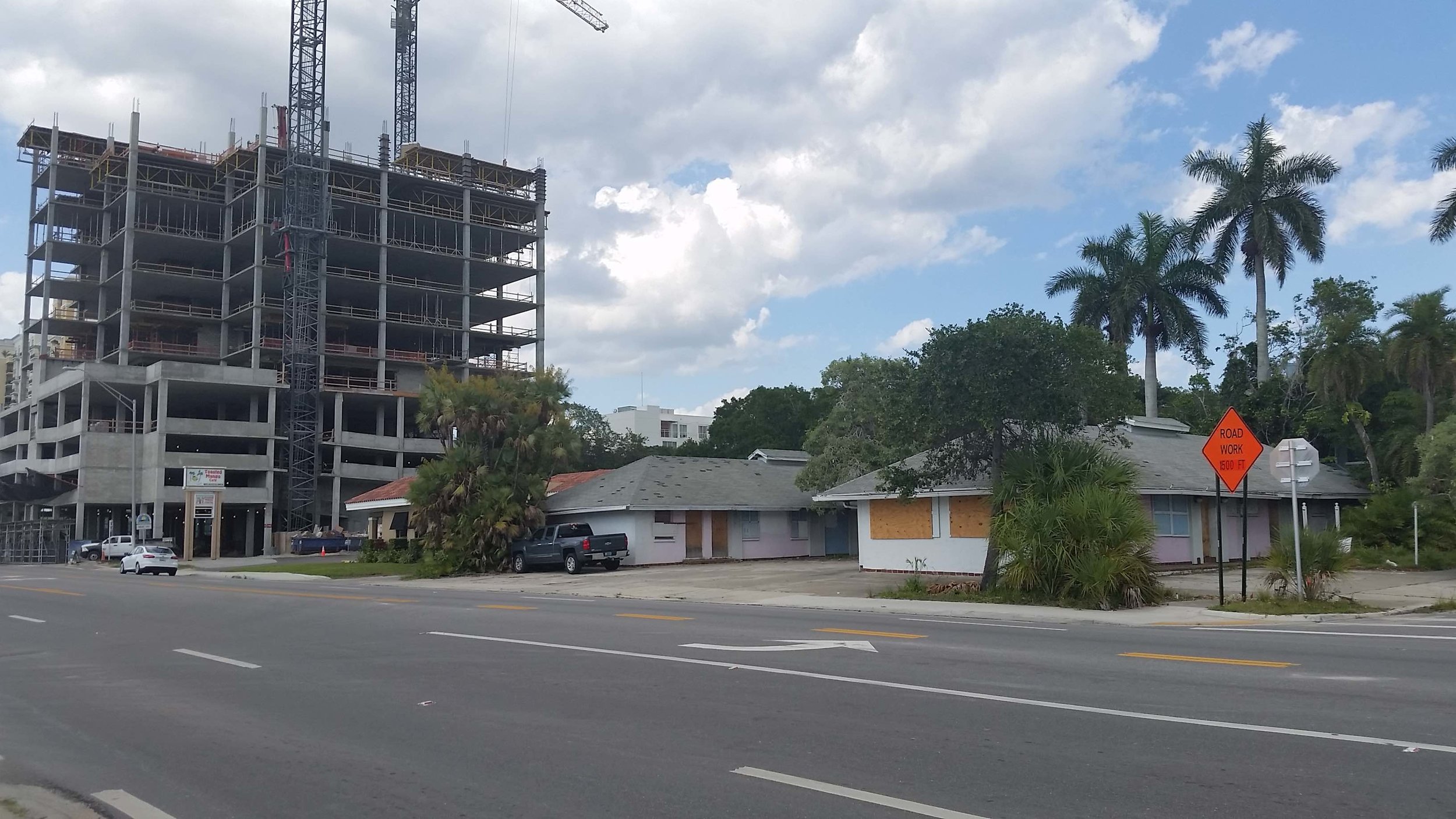
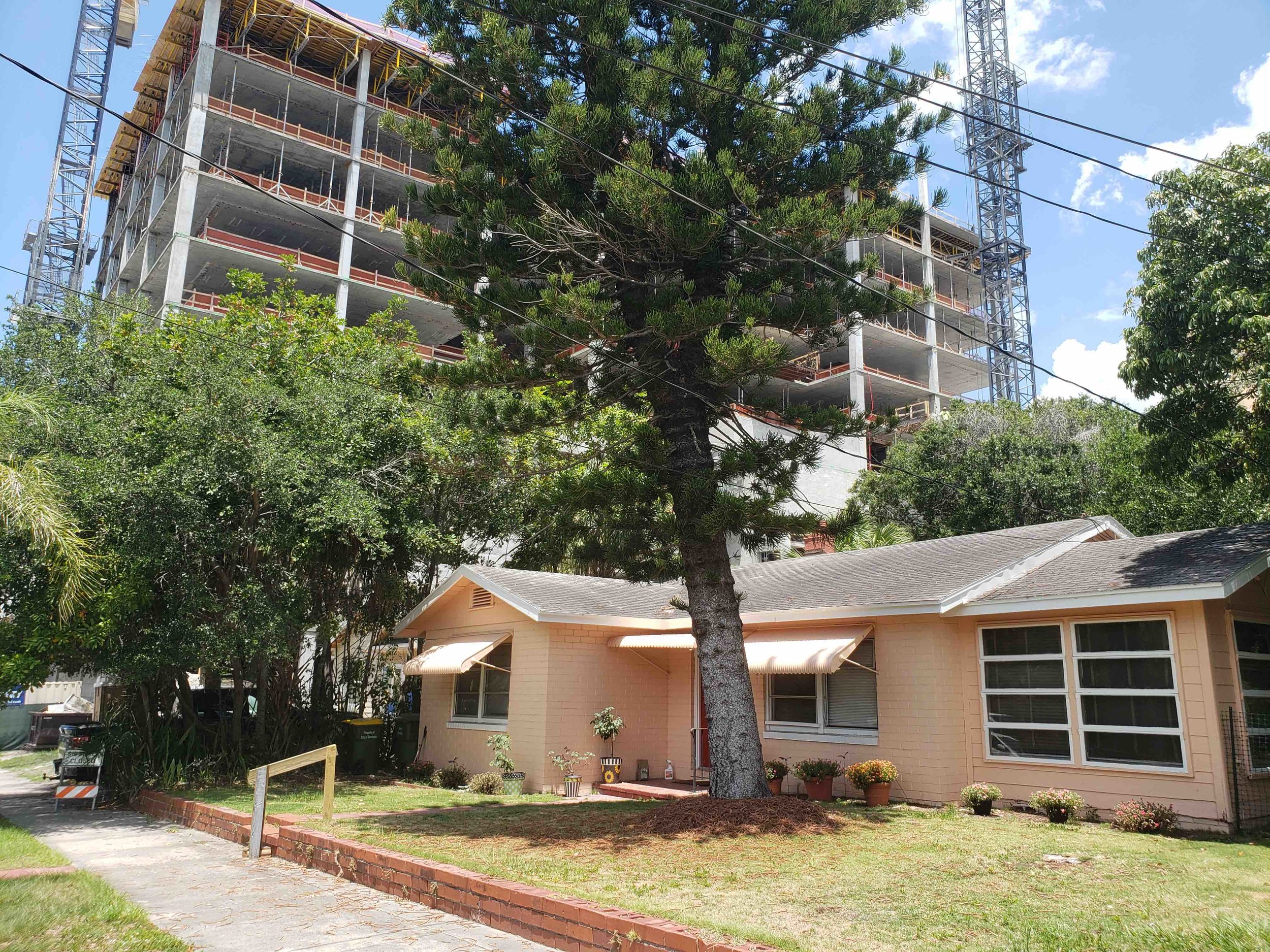

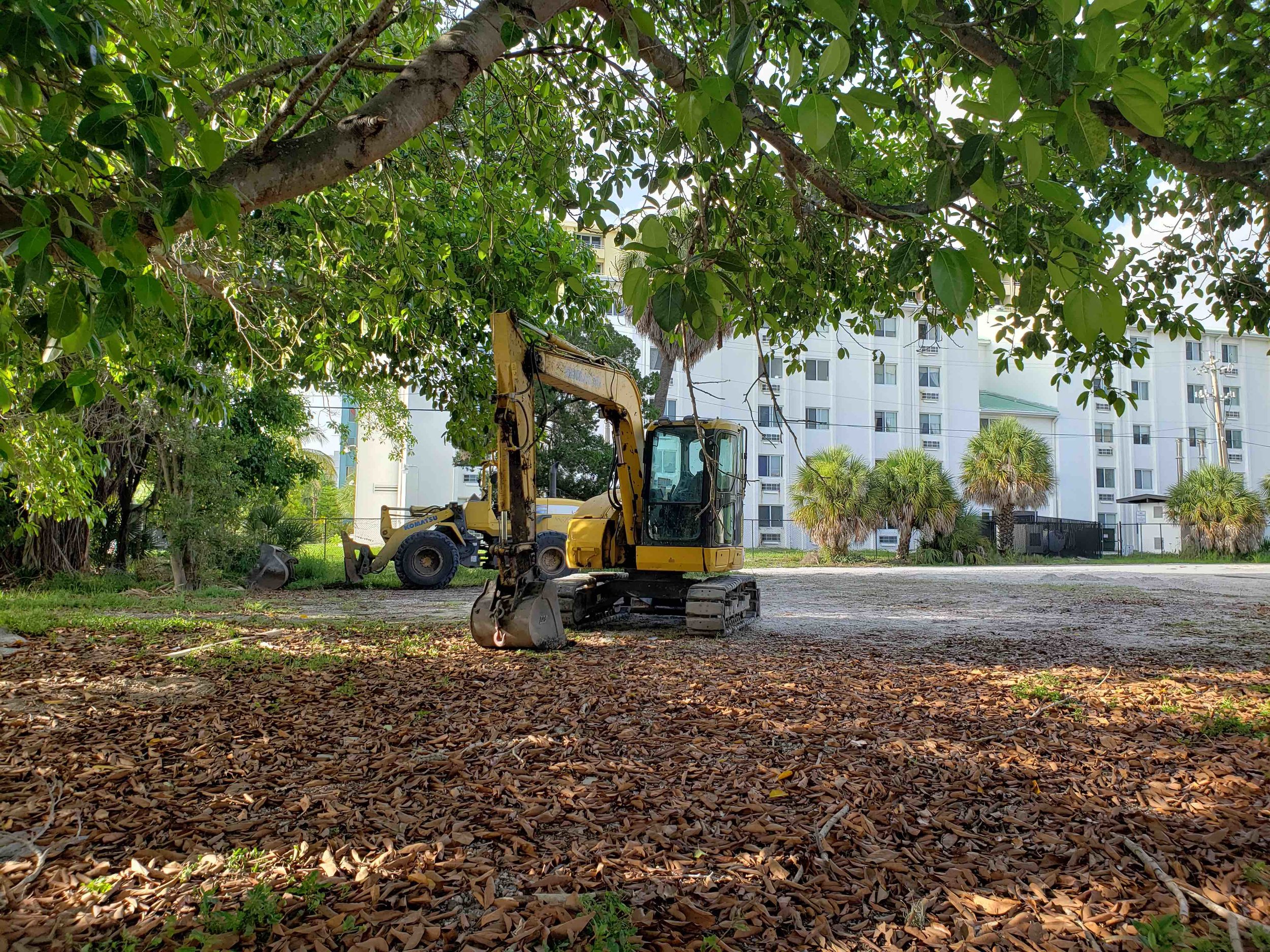
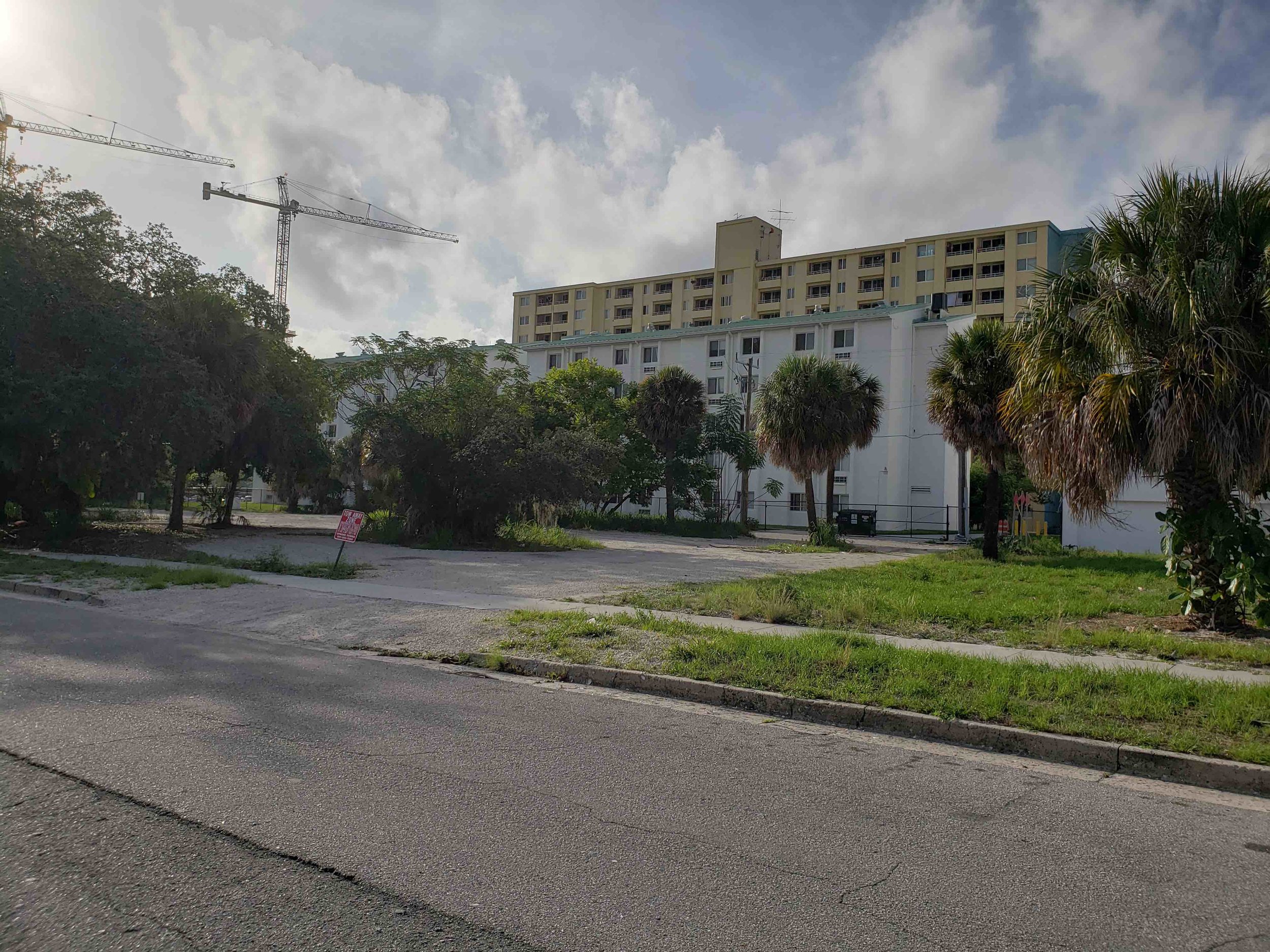
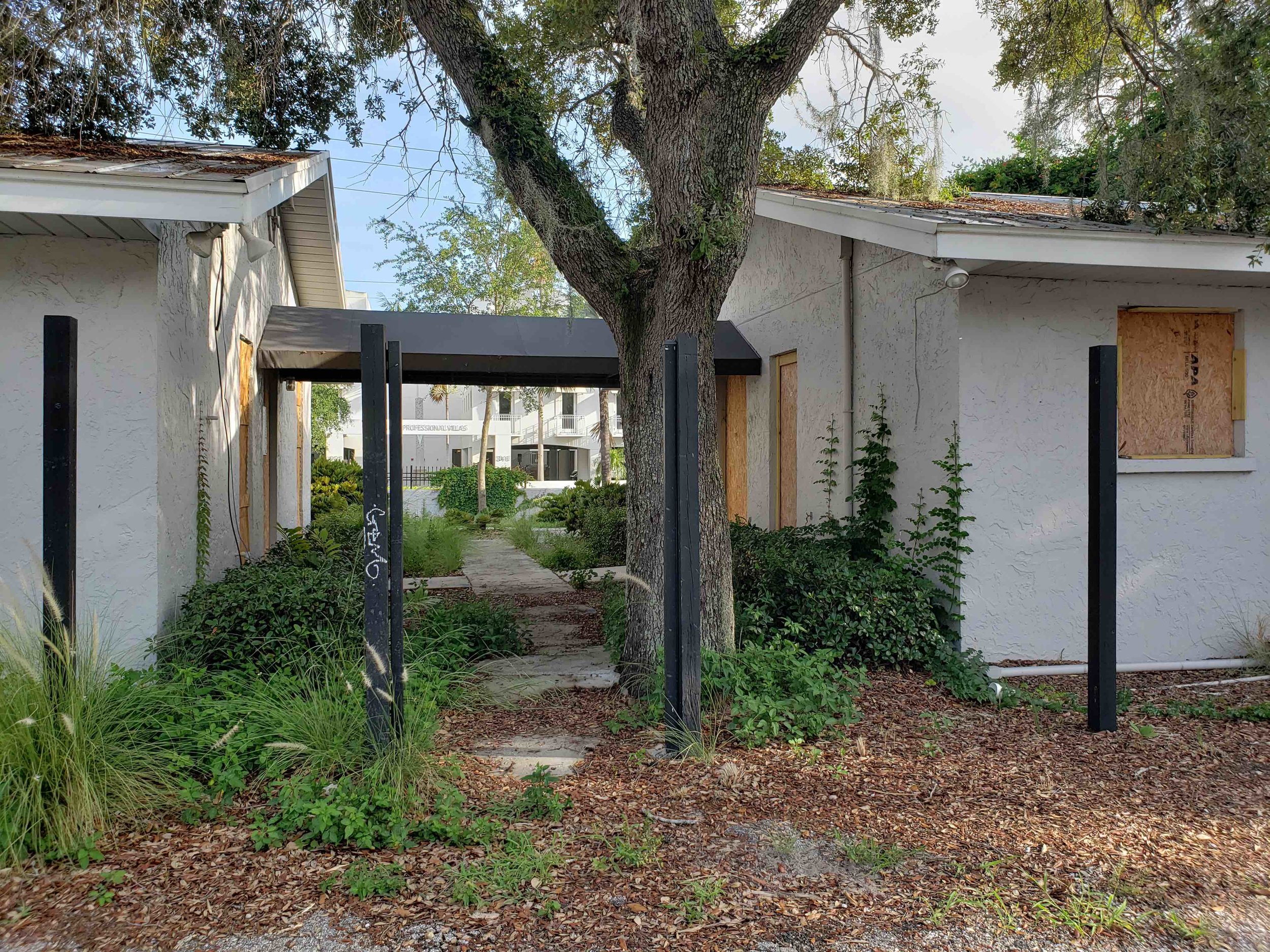
No-Build Zones and Build-Like-Crazy Zones
Almost all development activity occurs in a relative handful of neighborhoods. This is the case in virtually every big city in America. The Census Bureau's American Community Survey reports an estimate of the number of homes built since 2014 by census tract (a tract, about 4,000 people on average, is roughly equivalent to a neighborhood). It’s not precise, but it gives us an idea of the distribution—and that distribution shows us that redevelopment is concentrated in a very small number of hot-spot zones:
Click to view larger.
In Hennepin County, Minnesota—a vast stretch which includes Minneapolis, suburbs both rich and working-class, and still-rural outlying areas—more than 50% of all homes built since 2014 are in just 5% of census tracts—16 neighborhoods out of a total of 299. 75% of new homes are in just 34 census tracts.
Click to view larger.
In an area experiencing less growth, it’s even more lopsided. In Cuyahoga County, Ohio, an area of 1.2 million people that's home to Cleveland, 75% of new homes are in just 4.7% of census tracts (21 out of 443).
Most neighborhoods in most cities are seeing no new construction at all. Most of these "trickle" (or, I guess, drought) neighborhoods are not poor; the majority are middle- or upper-class areas of single-family homes, where the biggest reason nothing is being developed is because nothing is actually allowed to be.
But when a poor neighborhood becomes a "trickle" neighborhood, the effects are particularly brutal for its inhabitants.
Jane Jacobs famously sang the praises of what she called "unslumming" in The Death and Life of Great American Cities. This was supposed to be the organic, incremental process by which poor neighborhoods rejuvenate themselves. Residents form their own associations for mutual support and credit. They make small renovations to their property in ad-hoc ways as they can afford it—a new facade here, an added bedroom there. The homes in the worst shape might be replaced entirely, which has a positive effect on the surrounding properties, ensuring that their value steadily rises. These efforts not only improve the physical place, but lift a generation of its residents out of poverty right alongside the buildings they grew up with.
"Unslumming" as Jacobs describes it should be the goal for every poor neighborhood. Revitalization without gentrification, to use a phrase borrowed from Derek Avery, a small-scale developer whom we've profiled who works in low-income neighborhoods in Texas. Neighborhood improvement that is guided by the priorities of existing residents and that brings them along for the ride.
Unfortunately, this process is the exception rather than the rule. The rule, in poor neighborhoods, is decline, blight, and—if things get bad enough—abandonment.
Waiting for the Fire Hose
I took a walk around the next neighborhood over from the fire-hose area I described. This is still a trickle neighborhood. Here, the results of several decades worth of blight and hollowing-out are in evidence. Many homes are in poor condition. The city has contributed to the air of decline by not maintaining public infrastructure like sidewalks to a very high standard: the place just feels a bit forgotten.
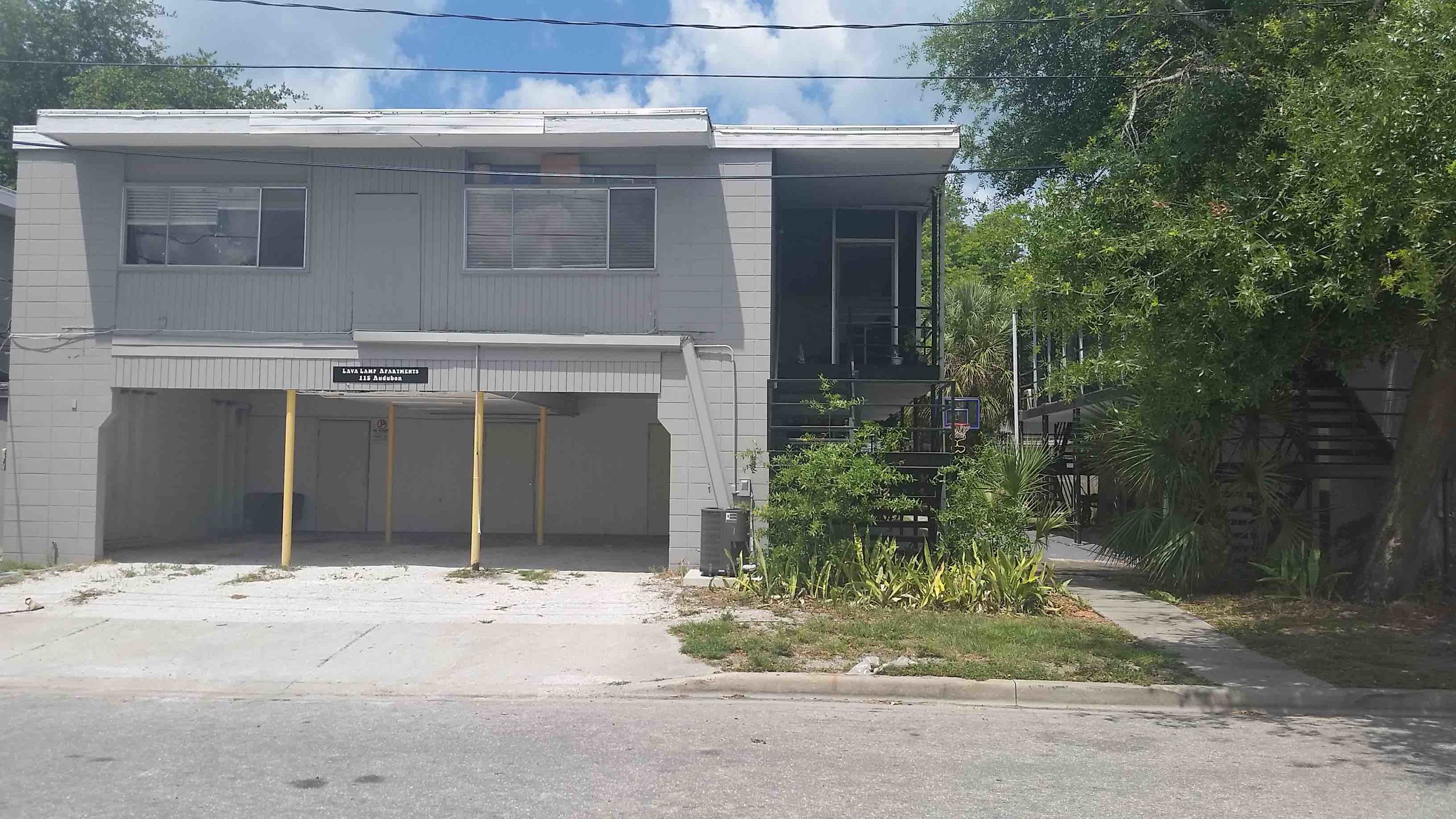
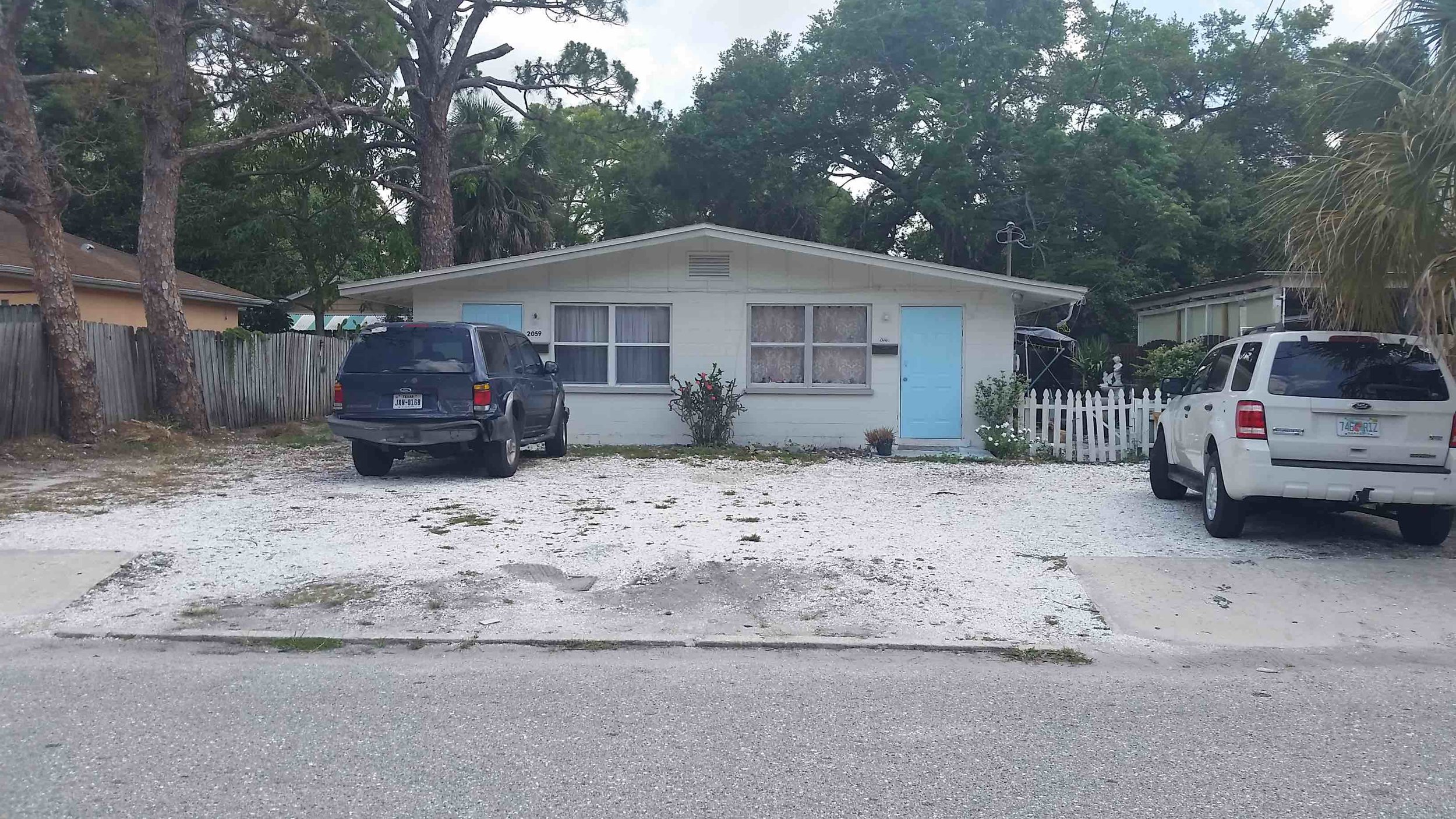
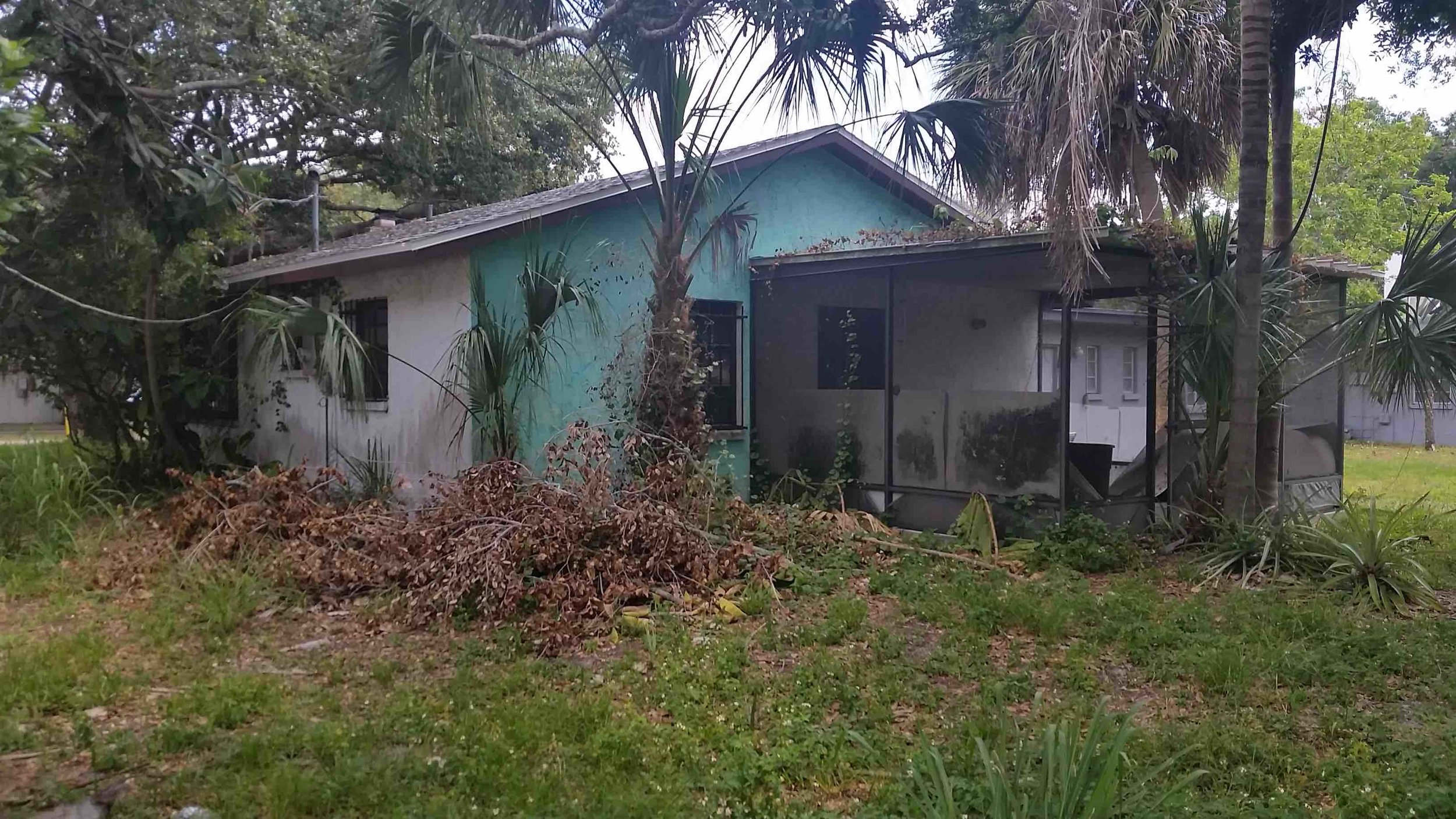
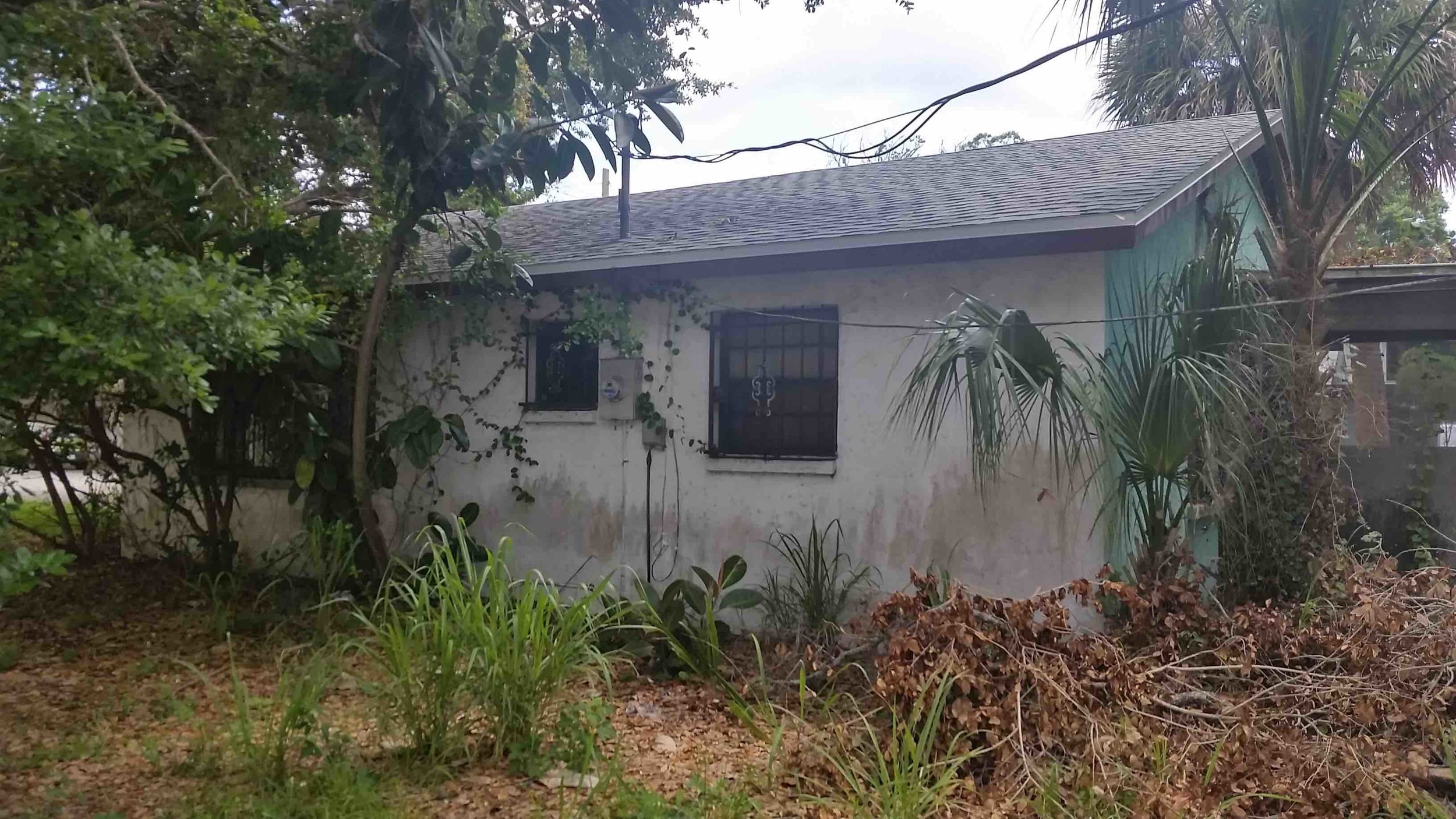
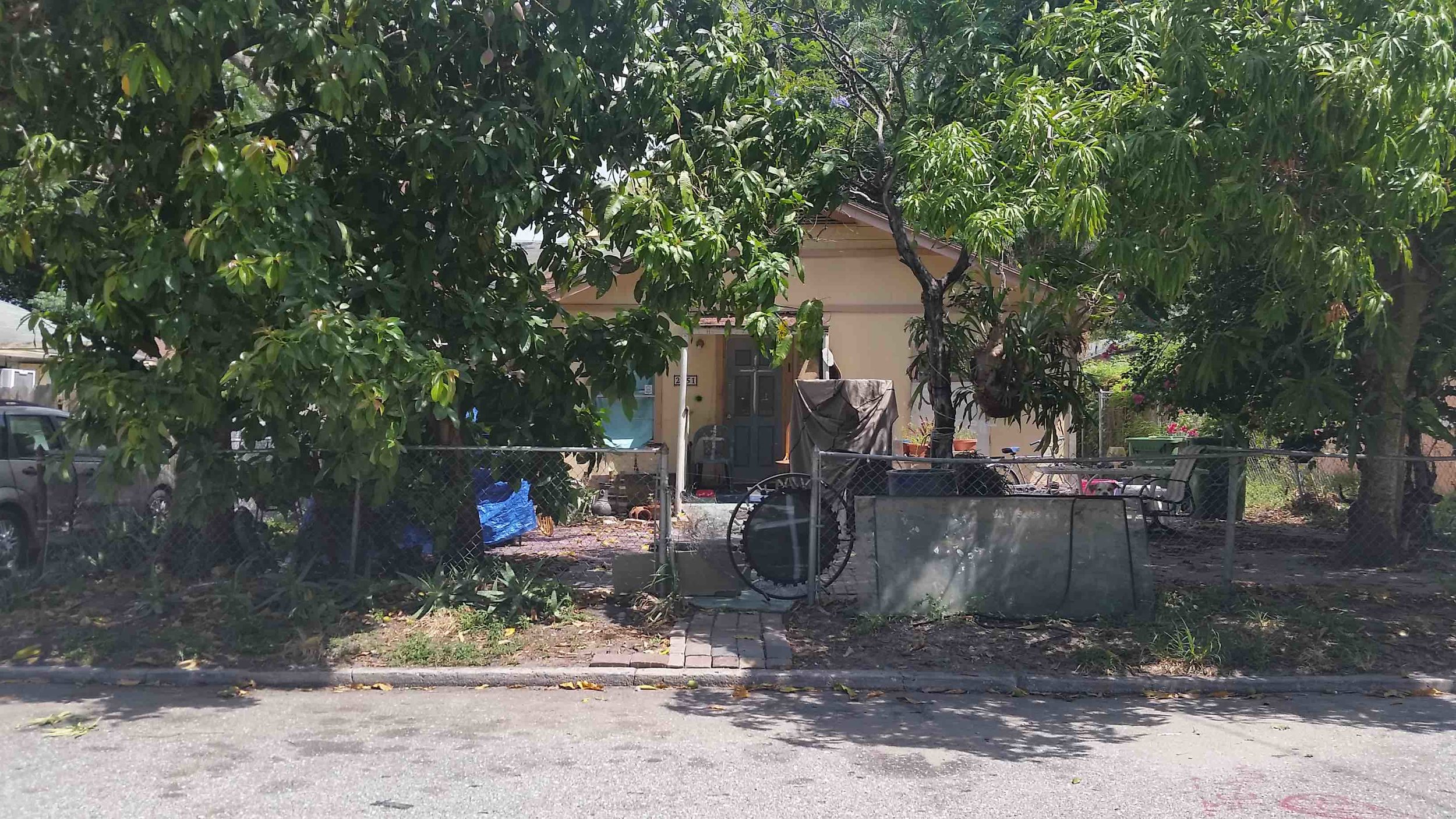
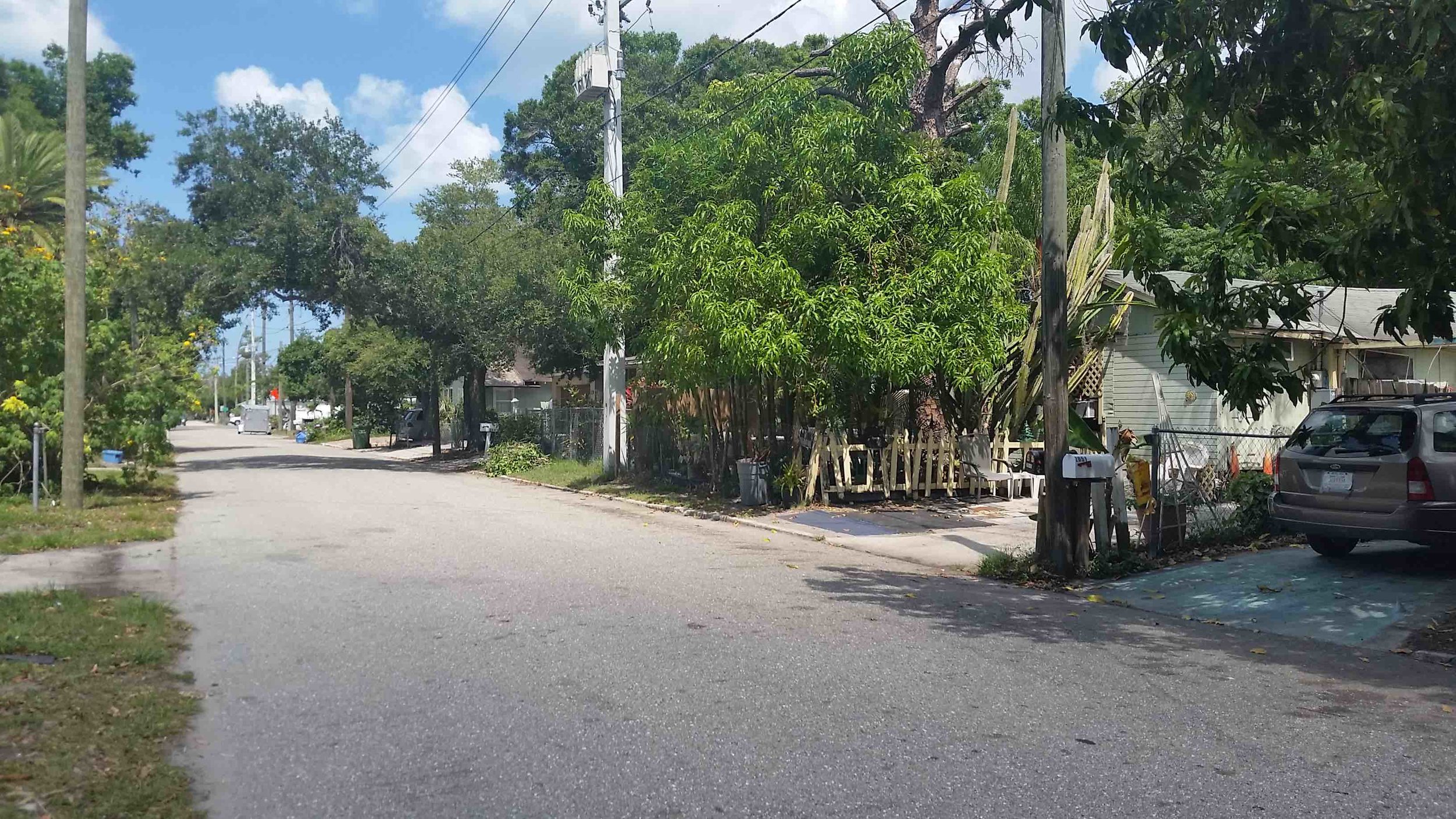
It wasn't always poor. This apartment complex offered luxurious living in 1926, making clear that this is a place that has suffered a brutal, long, slow decline, not a place that was never prosperous.
Nor is it true that the residents of this neighborhood don’t care to maintain the place. In fact, there is abundant evidence of spaces that are loved. In a lot of driveways and side yards, you can see residents doing DIY placemaking: the low-budget, improvisational analogue of the kind of landscaping—a patio, a garden, a pergola—that wealthy households will spend tens of thousands of dollars on:
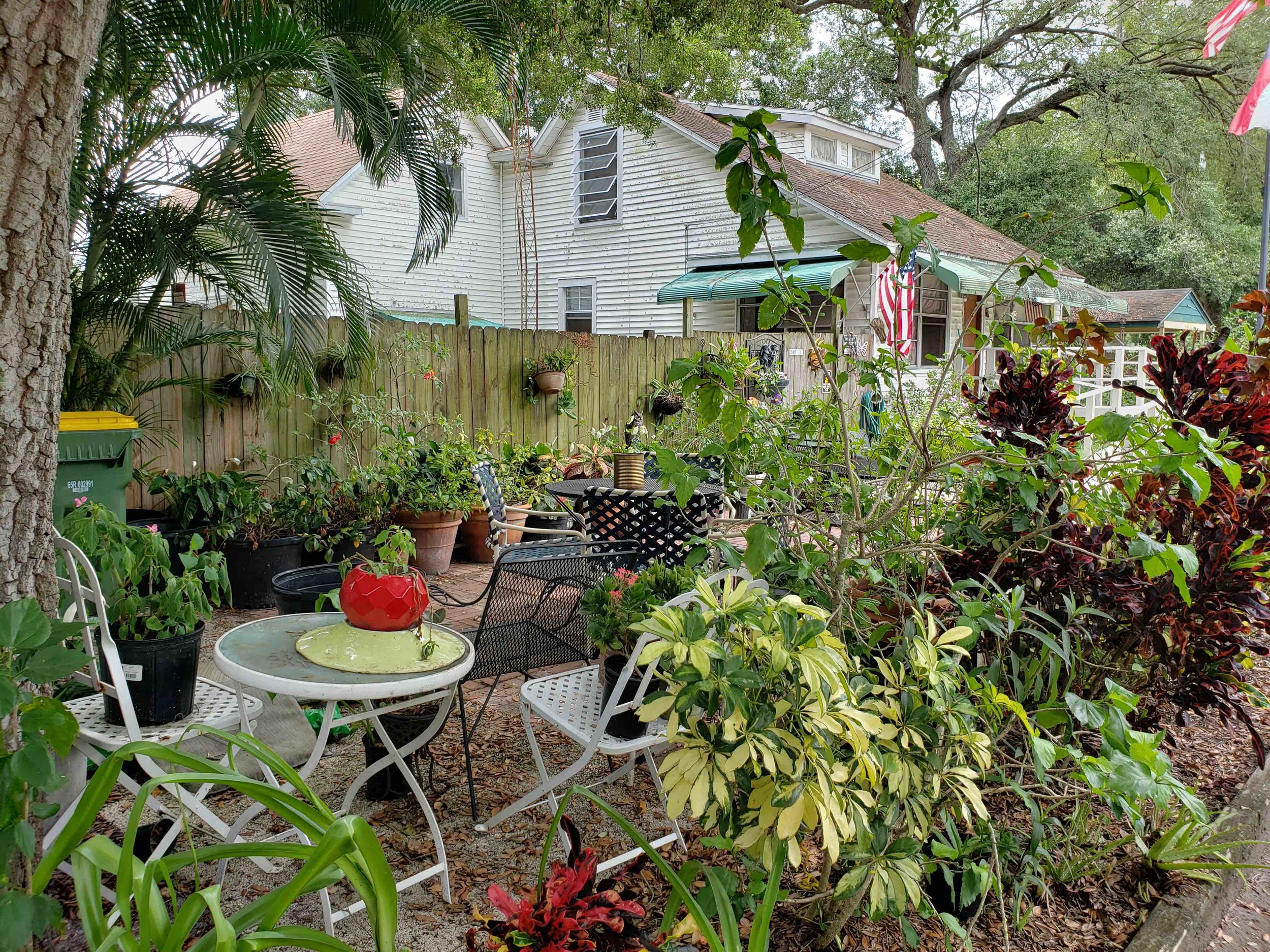
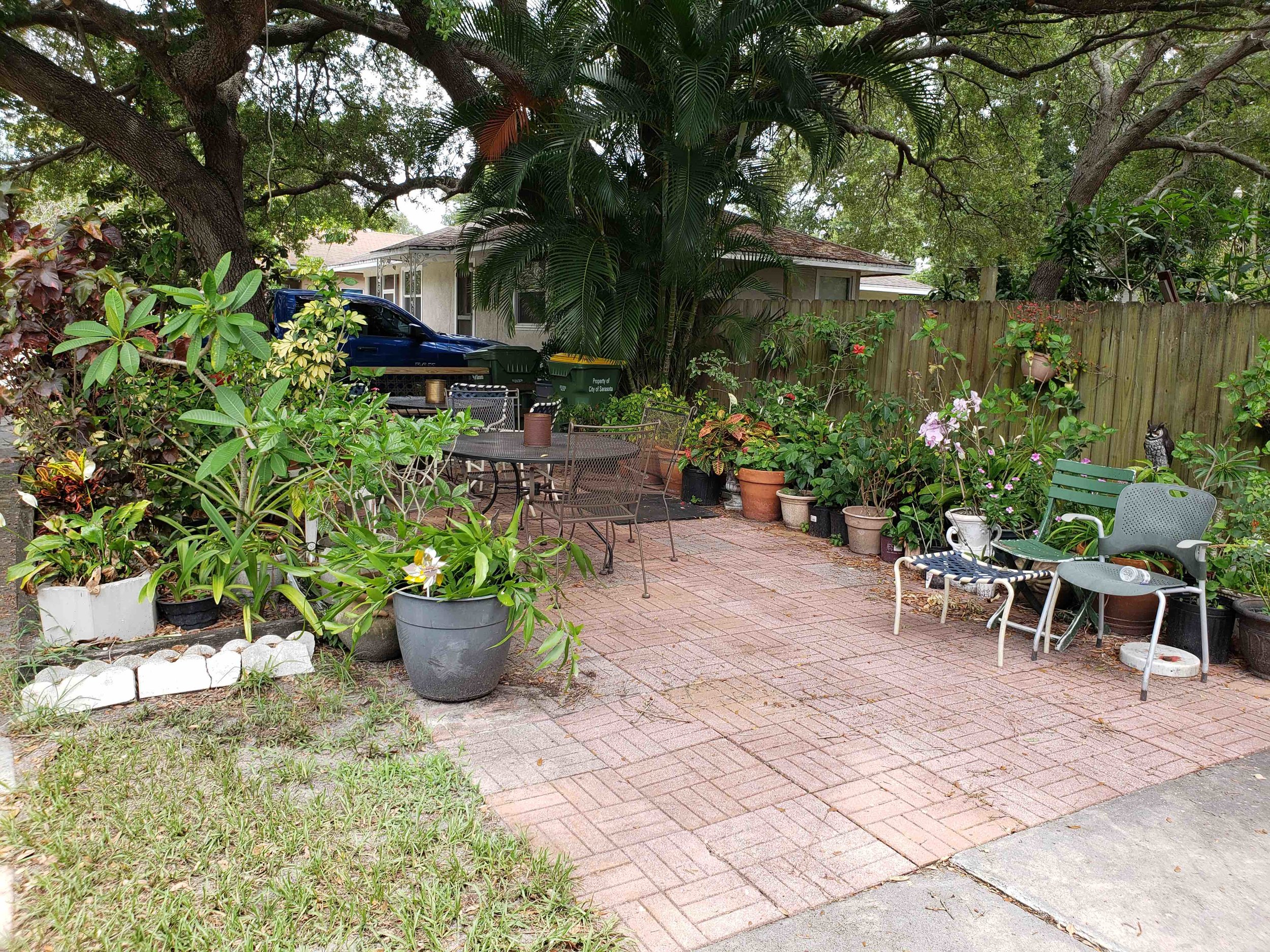
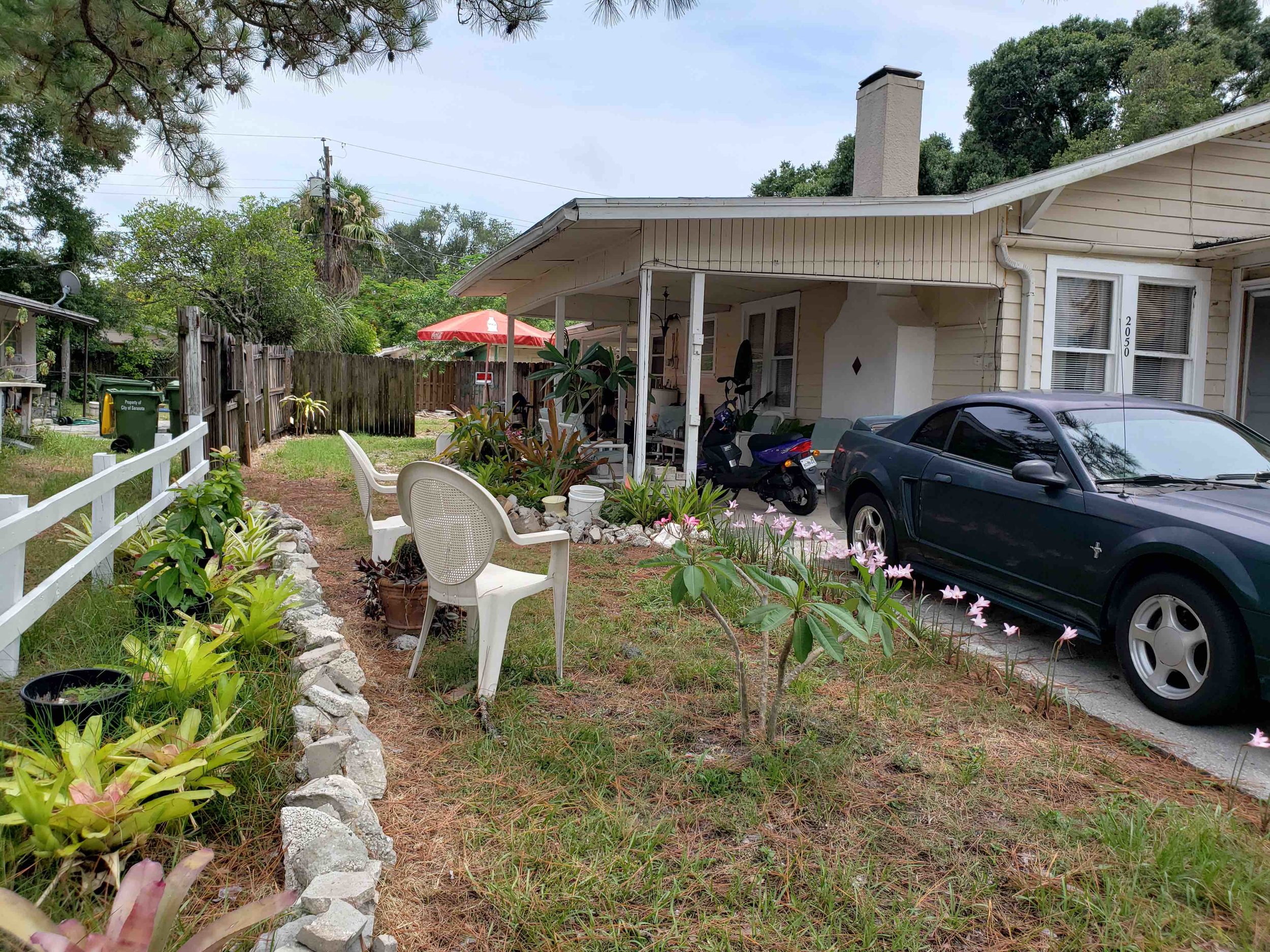
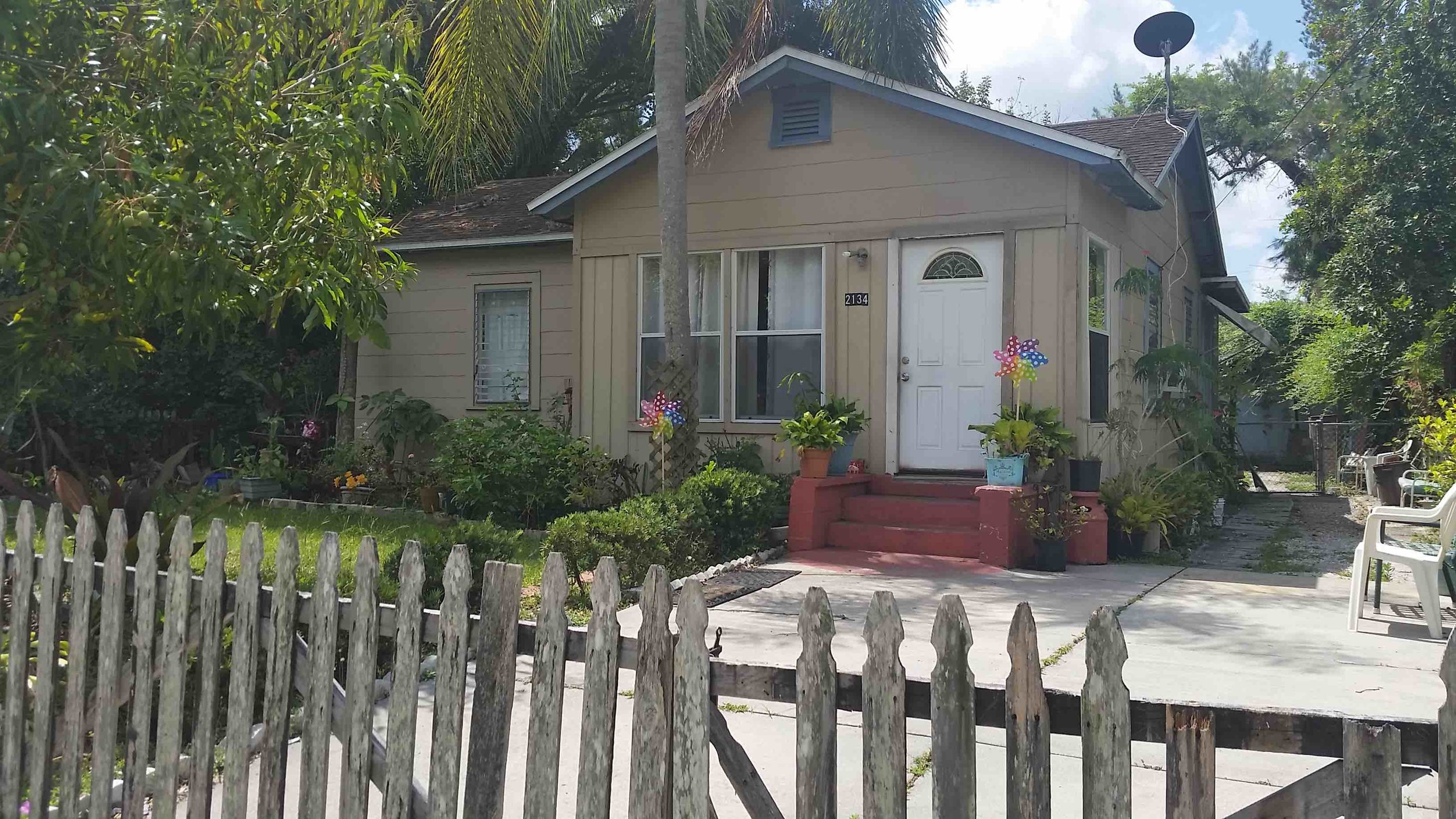
However, it’s hard to incrementally build wealth, neighborhood-wide, when property values are stagnant or declining. In such an environment, there's often no way to profitably build a new home. So when a home is condemned and demolished, it leaves a vacant lot in its place. When a home burns down, the burnt-out husk just sits there. Over time, the place just kind of empties out—though some blocks show much more of this blight than others:
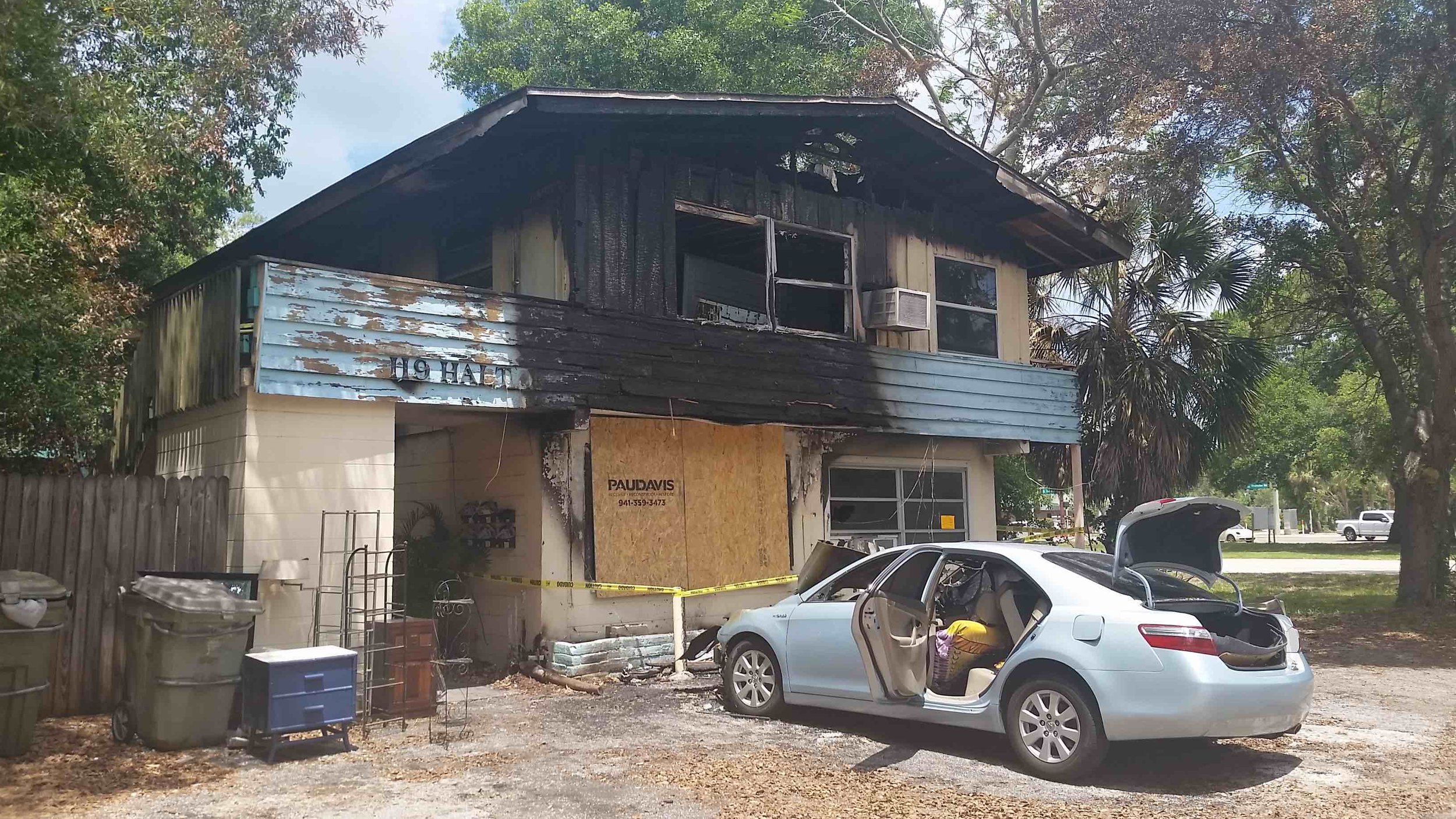
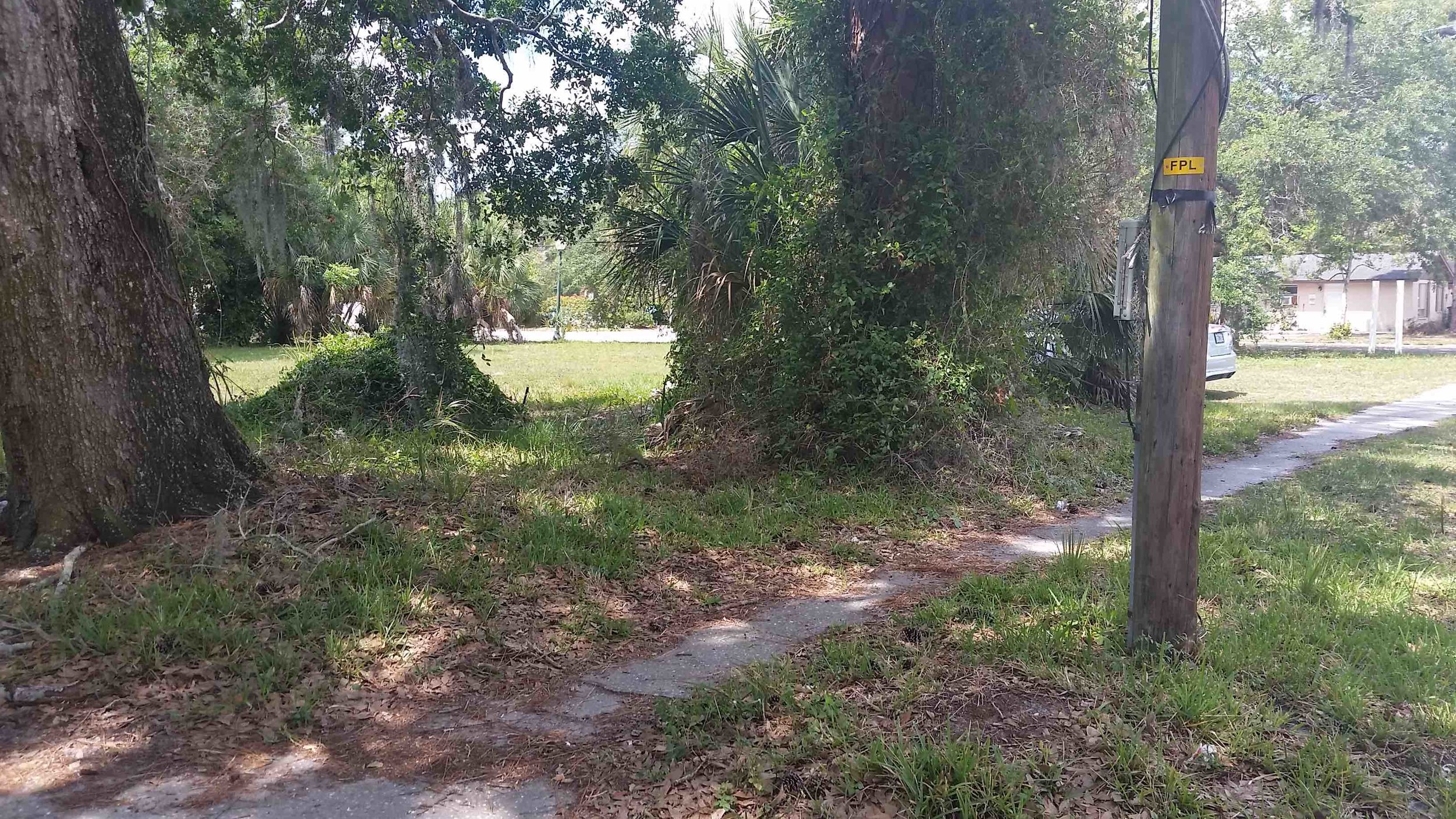
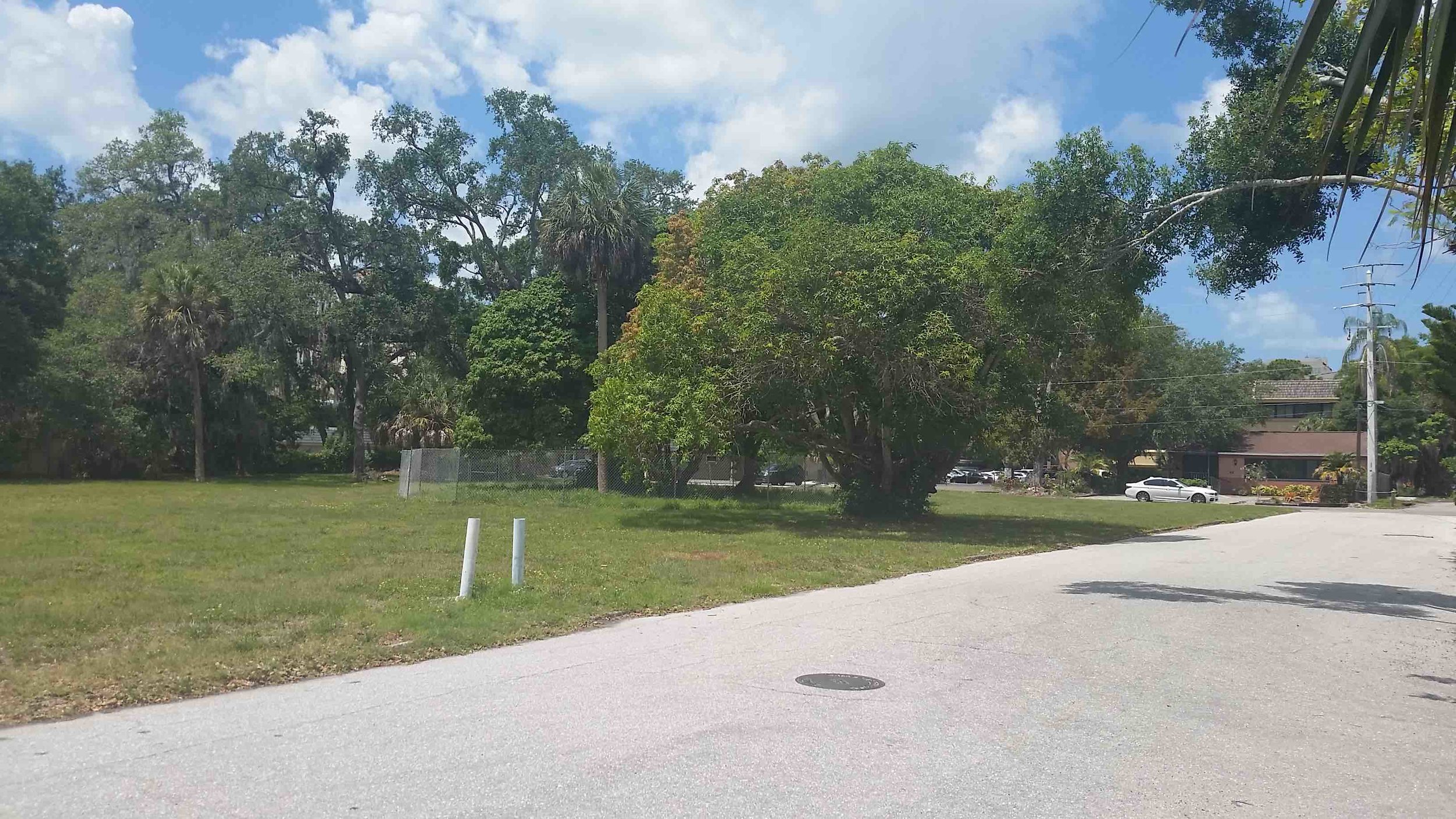
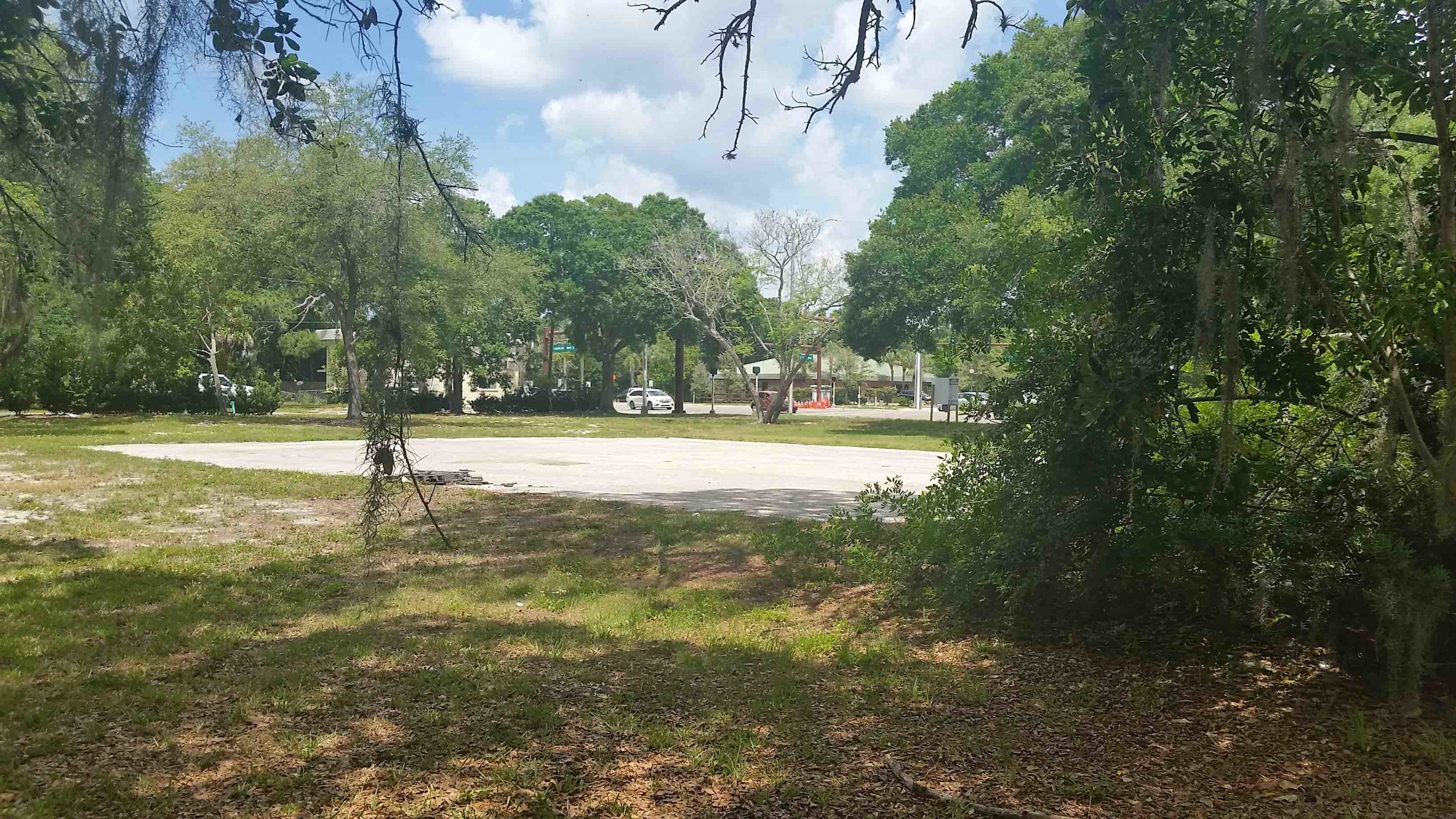

What this particular "trickle" neighborhood is, though, is very geographically near a booming downtown, and that makes it a target. The fire hose is coming, sooner than later.
The target demographic for new homes in this area is completely unlike the demographic of people who already live in the old homes in the area. Those existing residents are unlikely to benefit at all from that fire hose when it hits—unless they're fortunate enough to own their homes instead of rent. If so, at least they may be able to sell for a windfall if they can hang on until the right moment.
To large-scale developers—the kind who buy up ("assemble" is the term of art) a whole block's worth of houses and build a 200-unit apartment complex—this kind of area is a blank slate—closer to a new land to be colonized than a community to be co-created with its residents. The fire-hose model is enormously profitable, because when you start with an area where the value of the homes is rock bottom, there's a long way up you can go in a short amount of time.
But relying on fire-hose development to reinvent neighborhoods out of whole cloth—a new one every decade or market cycle—is a fragile way to sustain a city. It means neighborhoods suffering through decades of slow decline just to get to that supernova burst of redevelopment. And it means most residents, especially poorer residents, are shut out of the benefits of that redevelopment, because they don't have the means to play in the game the big developers are playing.
I wrote a lot of this essay while sitting on the patio at a cafe in the redeveloped area I described at the beginning. It's a great place; I come here to work at least once a week. I'll take it over a vacant lot or abandoned building any day. The point isn't that we should cheer against the redevelopment of blighted, abandoned, hollowed-out areas into lively and financially productive places.
The point is that we should ask why we allowed them to get so hollowed out in the first place. And we should ask what it would look like to have a city in which many neighborhoods experience ongoing, moderate levels of redevelopment and renewal, instead of a stark choice between the trickle and the fire hose.




Why is it that when a place is [pick one: walkable, bikeable, beautiful, lovable, inviting, human-scale], it so often gets coded as being “gentrified” or “upscale”?